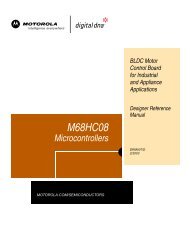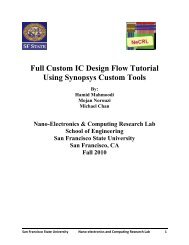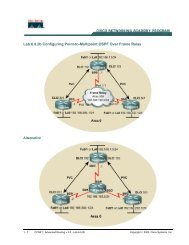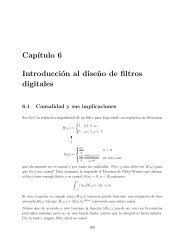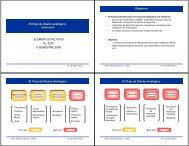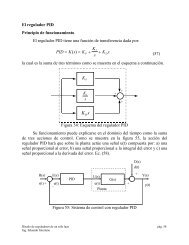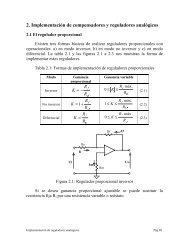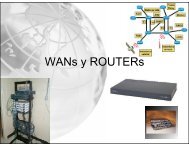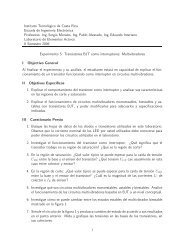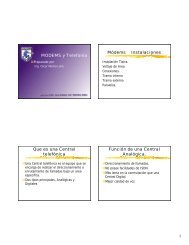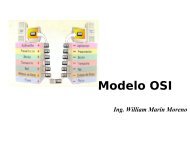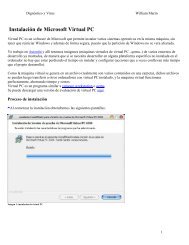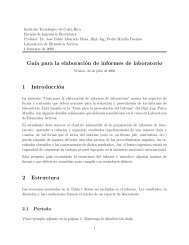Chapter 6 Experimental Mapping Method
Chapter 6 Experimental Mapping Method
Chapter 6 Experimental Mapping Method
You also want an ePaper? Increase the reach of your titles
YUMPU automatically turns print PDFs into web optimized ePapers that Google loves.
174 ENGINEERING ELECTROMAGNETICS<br />
FIGURE 6.3<br />
An example of a curvilinear-square field map.<br />
The side of the square is two thirds the radius<br />
of the circle. N V ˆ 4 and N Q ˆ 8 3:25 26,<br />
and therefore C ˆ 0 N Q =N V ˆ 57:6 pF/m.<br />
and then using (2),<br />
C ˆ NQ<br />
N V<br />
L t<br />
L N<br />
ˆ N Q<br />
N V<br />
…3†<br />
since L t =L N ˆ 1. The determination of the capacitance from a flux plot<br />
merely consists of counting squares in two directions, between conductors and<br />
around either conductor. From Fig. 6.3 we obtain<br />
8 3:25<br />
C ˆ 0 ˆ 57:6 pF=m<br />
4<br />
Ramo, Whinnery, and Van Duzer have an excellent discussion with examples<br />
of the construction of field maps by curvilinear squares. They offer the<br />
following suggestions: 1<br />
1. Plan on making a numberof rough sketches, taking only a minute orso<br />
apiece, before starting any plot to be made with care. The use of transparent<br />
paper over the basic boundary will speed up this preliminary sketching.<br />
2. Divide the known potential difference between electrodes into an equal<br />
numberof divisions, say fouroreight to begin with.<br />
1 By permission from S. Ramo, J. R. Whinnery, and T. Van Duzer, pp. 51±52. See Suggested References at<br />
the end of Chap. 5. Curvilinear maps are discussed on pp. 50±52.



